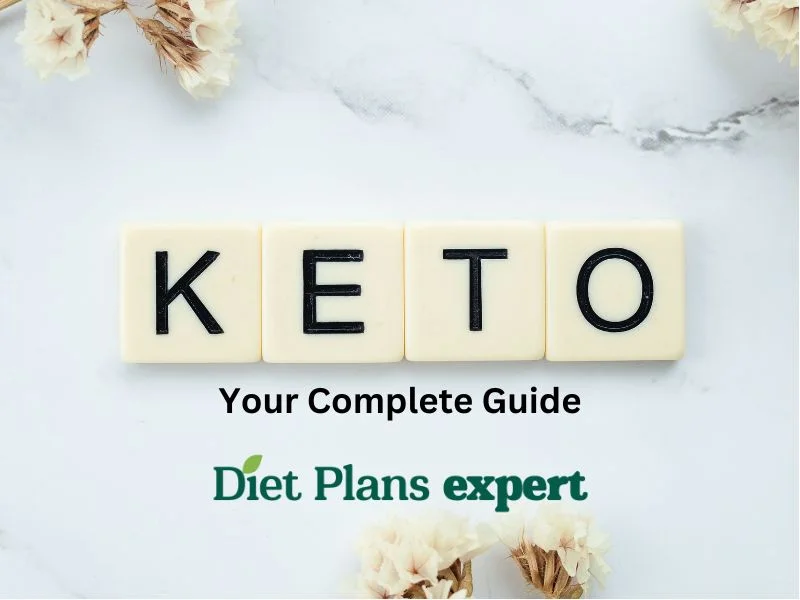
The keto diet is a high-fat, low-carb diet that has been gaining popularity in recent years. This diet forces your body to burn fat for energy instead of carbohydrates. When you eat a keto diet, your body enters a state of ketosis, where it produces ketones for energy. Ketones are a type of fuel that your body can use instead of glucose.
There are many potential benefits to following the keto diet. Some of the benefits include:
The keto diet is a high-fat, low-carb diet that forces your body to burn fat for energy instead of carbohydrates. When you eat a keto diet, your body enters a state of ketosis, where it produces ketones for energy. Ketones are a type of fuel that your body can use instead of glucose.
The keto diet works by restricting your carbohydrate intake to a very low level. This forces your body to burn fat for energy instead of carbohydrates. When your body burns fat for energy, it produces ketones. Ketones are a type of fuel that your body can use instead of glucose.

Eggs. A keto diet meal
Photo by Foodie Factor
The keto diet is a high-fat, low-carb diet. This means that you should eat foods that are high in fat and low in carbs. Some of the foods that are allowed on the keto diet include:
A table of what to eat on the keto diet:
| Food Group | Examples |
|---|---|
| Protein | Beef, chicken, fish, eggs, pork, lamb, tofu, tempeh, beans, lentils, nuts, seeds |
| Fats | Avocados, olive oil, coconut oil, butter, nuts, seeds, fatty fish |
| Low-carb vegetables | leafy greens, broccoli, cauliflower, Brussels sprouts, asparagus, peppers, zucchini, cucumbers, tomatoes, onions, mushrooms |
| High-fat dairy | Full-fat cheese, cream, unsweetened yogurt |
| Other | Coffee, tea, water, unsweetened nut milks |
Notes:
The keto diet is a high-fat, low-carb diet. This means that you should avoid foods that are high in carbs and low in fat. Some of the foods that you should avoid on the keto diet include:
A table of what to avoid on the keto diet:
| Food Group | Examples |
|---|---|
| Carbs | Bread, pasta, rice, cereal, potatoes, corn, fruit (most fruits are too high in carbs for keto), sugary drinks, sweets, desserts |
| Starchy vegetables | Carrots, peas, corn, parsnips, potatoes |
| Processed foods | Packaged snacks, frozen meals, chips, crackers, cookies, cakes, pastries |
| Sugar | Honey, maple syrup, agave nectar, sugar substitutes |
| Alcohol | Most alcoholic drinks are high in carbs |

potatoes are high carb food. Photo by Monika Grabkowska on Unsplash
The keto diet can be a safe and effective way to lose weight and improve your health. However, there are some potential risks and considerations that you should be aware of before starting the diet.
One potential risk of the keto diet is that it can cause side effects such as fatigue, nausea, and constipation. These side effects are usually mild and go away after a few days. However, if you experience any severe side effects, you should stop the diet and talk to your doctor.
Another potential risk of the keto diet is that it can lead to nutrient deficiencies. This is because the keto diet restricts your intake of certain foods that are high in vitamins and minerals. To avoid nutrient deficiencies, you should make sure to eat a variety of keto-friendly foods and take a multivitamin.
The body enters ketosis when your blood sugar levels are low and your body starts to burn fat for energy. This happens when you eat a very low-carb diet.
When you eat carbohydrates, your body breaks them down into glucose. Glucose is the body’s main source of energy. However, when you eat a very low-carb diet, your body doesn’t have enough glucose to use for energy.
To compensate, your body starts to break down fat into ketones. Ketones are a type of fuel that your body can use instead of glucose.
When you enter ketosis, your body undergoes a number of metabolic changes. These changes include:
Ketosis can help you lose weight in a number of ways. First, it helps you burn more fat. Second, it helps you suppress your appetite. Third, it can help you improve your insulin sensitivity, which can make it easier for you to lose weight.
In addition to weight loss, the keto diet has been shown to have a number of other potential health benefits. These benefits include:

A keto diet meal. Photo by Alex Munsell on Unsplash
When you’re starting the keto diet, it’s important to set realistic goals. Don’t try to do too much too soon. Start by gradually reducing your carb intake and increasing your fat intake.
When you first start the keto diet, you may experience some side effects such as fatigue, nausea, and constipation. These side effects are usually mild and go away after a few days. However, if you experience any severe side effects, you should stop the diet and talk to your doctor.
When you’re on the keto diet, it’s important to structure your meals in a way that will help you stay in ketosis. This means eating plenty of high-fat foods and avoiding foods that are high in carbs.
The keto diet can be challenging at first, but it’s important to stay motivated. There are a number of things you can do to overcome challenges and stay motivated, such as:
If you want to maintain a sustainable keto lifestyle, it’s important to make sure that the diet is right for you. You should also make sure that you’re getting enough nutrients and that you’re not experiencing any negative side effects.
When you’re on the keto diet, it’s important to balance your macronutrients. This means eating the right amount of protein, fat, and carbohydrates.
Exercise can be a great way to improve your overall health and well-being. It can also help you lose weight and maintain your weight loss on the keto diet.
It’s important to monitor your progress on the keto diet. This means tracking your weight, blood sugar levels, and other health metrics. If you’re not seeing the results you want, you may need to adjust your diet or exercise routine.
Here are some additional tips to help you avoid these common mistakes:
The keto diet is a great way to lose weight and improve your health. However, it’s important to do your research and talk to your doctor before starting the diet. If you follow the diet correctly, you can reap the many benefits that it has to offer.
Read this post for more information about healthy eating tips:
Reference: Mayo Clinic
